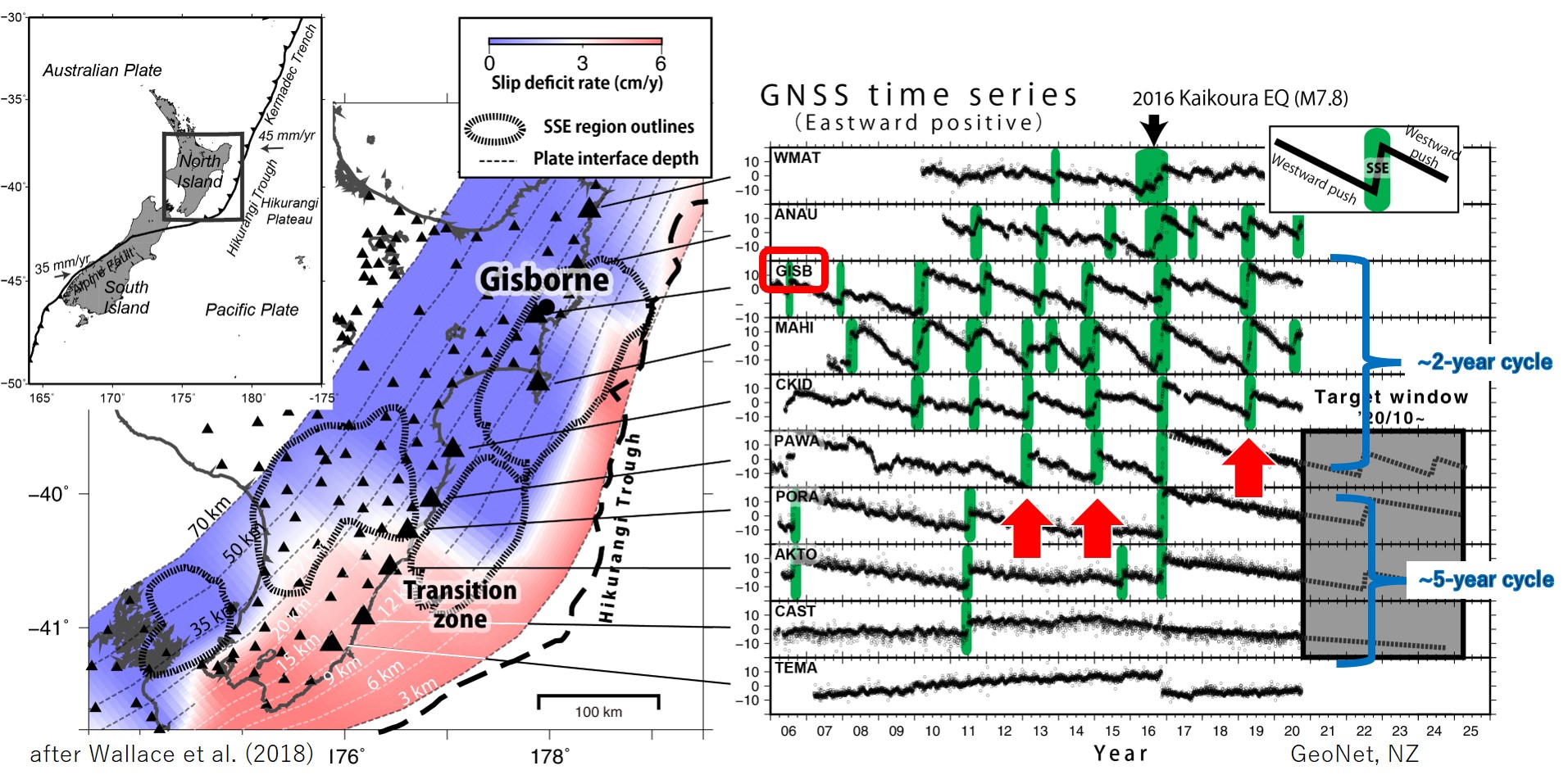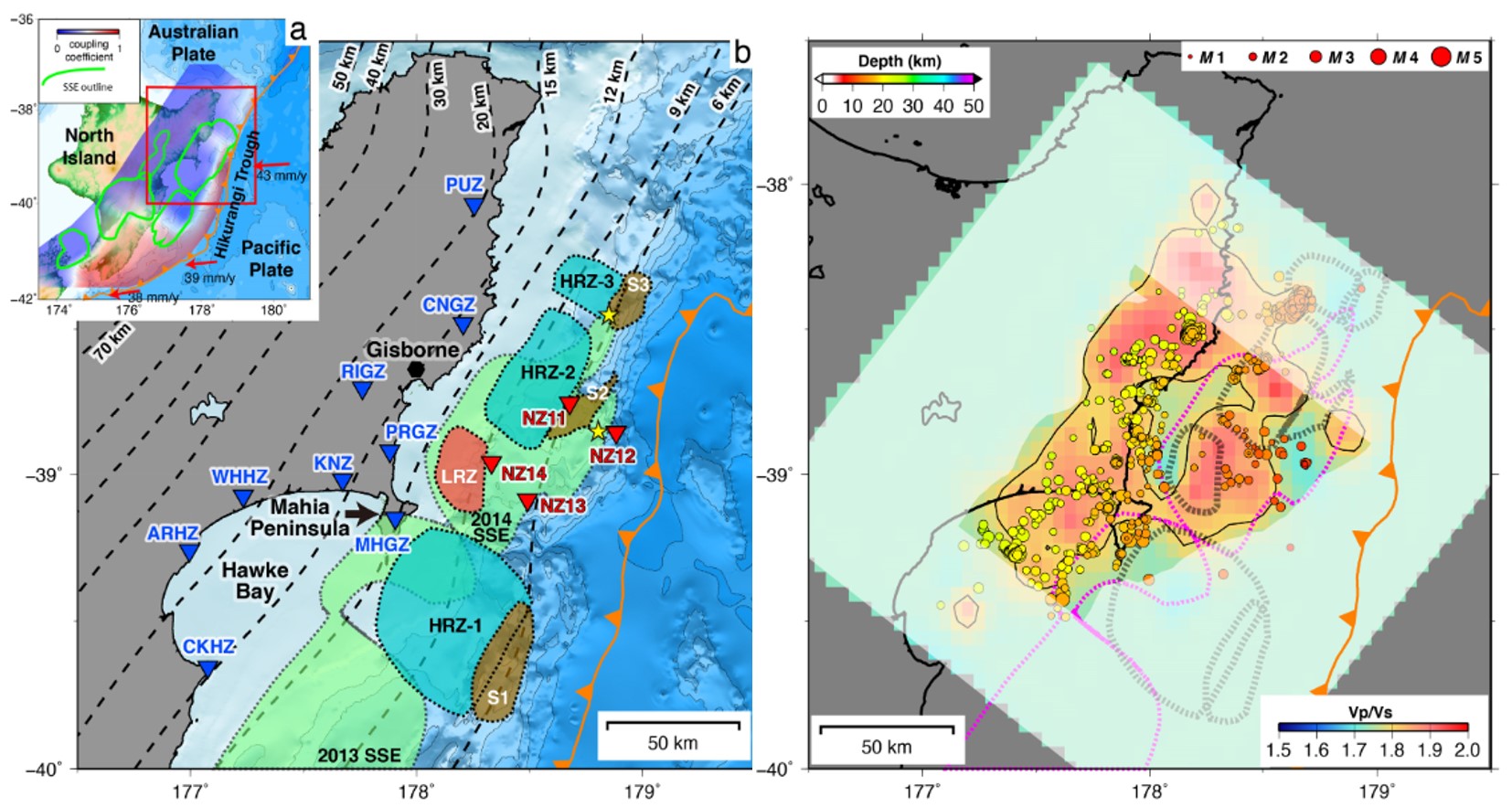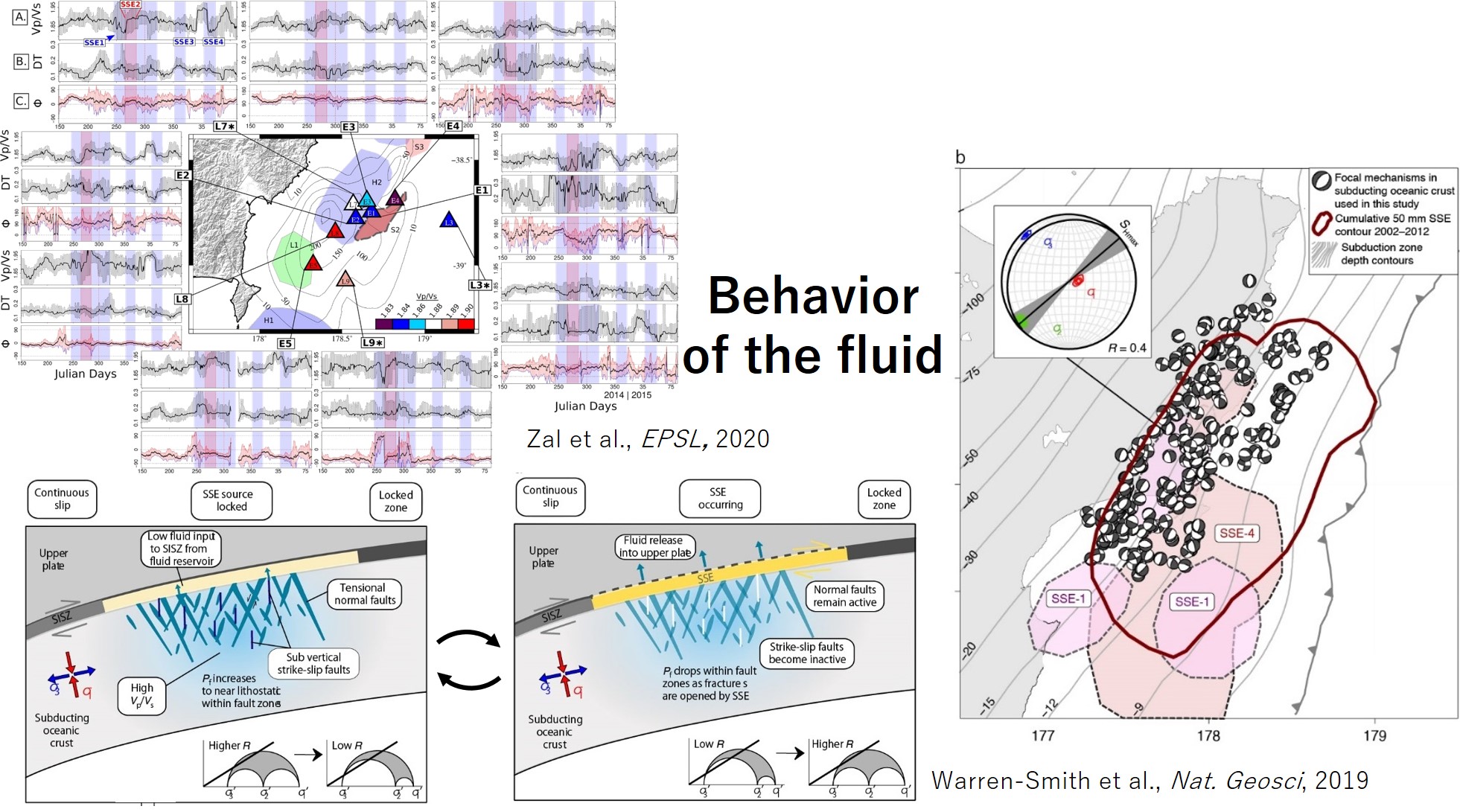Kimihiro Mochizuki
Marine Seismology @ ERI, U-Tokyo
Hikurangi Subduction Zone

In the Hikurangi subduction zone off the eastern coast of the North Island of New Zealand, the Pacific Plate is subducting westward beneath the Australian Plate, causing a variety of fault slip events, including normal earthquakes and Slow Slip Events (SSE).

Wallace, L.M., S. Hreinsdóttir, S. Ellis, I. Hamling, E. D’Anastasio and P. Denys, Triggered Slow Slip and Afterslip on the Southern Hikurangi Subduction Zone Following the Kaikōura Earthquake, Geophys. Res. Lett., DOI: 10.1002/2018GL077385, 2018
GeoNet, New Zealand: https://www.geonet.org.nz/
Slow Slip Events (SSE) that repeat regularly and frequently
From onshore GNSS geodetic deformation observations deployed at high density, the interplate locking strength along the subduction zone has been estimated (left panel: red = strong locking, blue = weak locking), and changes significantly in the central part of the subduction zone (left panel: Transition Zone). North of the transition zone, the locking zone from the trough axis is narrow, and the SSE (black dotted line in the left panel) occurs at the plate interface shallower than 15 km in depth with an approximately 2-year cycle (right panel: GNSS time series - eastward positive, SSE = green). South of the transition zone, the width of the locking zone widens sharply, and the interval between SSE occurrences increases to about 5 years around the transition zone.
We have successfully observed SSEs that occurred off Gisborne in the northern subduction zone in 2012, 2014, and 2019 (right figure: red arrows), and confirmed the occurrence of tectonic tremors under the sea associated with SSEs.

Mochizuki, K., S. Henrys, D. Haijima, E. Warren-Smith and B. Fry, Seismicity and velocity structure in the vicinity of repeating slow slip earthquakes, northern Hikurangi subduction zone, New Zealand, Earth Planet. Sci. Lett., DOI: 10.1016/j.epsl.2021.116887, 2021
Seismic characteristics of the oceanic crust and features of the plate interface
Because of shallow plate subduction (left panel: black dashed line = depth of the plate boundary), the characteristics of the plate interface have been characterized in detail at high resolution from seismic surveys. In the down-dip of the subducted seamounts (left panel: brown regions = S1~S3), there exist seismic high-amplitude reflectivity zones (HRZ) along the plate interfaces (left panel: light blue regions = HRZ1~HRZ3 and red regions = LRZ (lens reflectivity zone)), i.e., areas with a large fluid distribution, which is consistent with the slip distribution of the SSE. The SSE slip distribution is also in concordance with the SSE slip distribution. In the subducted oceanic crust beneath HRZs and LRZ, the ratio of P-wave velocity to S-wave velocity (Vp/Vs), which is an indicator of fluid distribution, is large (right panel), suggesting that fluid generated in the oceanic crust is accumulated at the plate interface.
Seismic activity in the oceanic crust (circles in the right panel) occurs in the vicinity of regions with large Vp/Vs. This suggests that seismic activity is active in the oceanic crust where the appropriate pore fluid pressure conditions are met.

Zal, H., K. Jacobs, M. Savage, J. Yarce, S. Mroczek, K. Graham1 E.K. Todd, J. Naka, Y. Iwasaki, A. Sheehan, K. Mochizuki, L. Wallace, S. Schwartz, S. Webb and S. Henrys, Temporal and spatial variations in seismic anisotropy and Vp/Vs ratios in a region of slow slip, Earth Planet. Sci. Lett., DOI: 10.1016/j.epsl.2019.115970, 2020
Warren-Smith, E., B. Fry, L. Wallace, E. Chon, S. Henrys, A. Sheehan, K. Mochizuki, S. Schwartz, S. Webb and S. Lebedev, Episodic stress and fluid pressure cycling in subducting oceanic crust during slow slip, Nat. Geosci., DOI: 10.1038/s41561-019-0367-x, 2019
SSE Occurrence and Fault-Valve Model
The temporal distribution of the seismic focal mechanism (right panel) shows that the variability increases before the onset of SSE and decreases after the SSE. This is interpreted to be due to the accumulation of fluid generated by the dehydration reaction in the oceanic plate along subduction, which increases the pore fluid pressure and decreases the effective normal stress along the intra-structural fault plane. From this observation, we propose a "Fault-Valve model" (lower left panel); in the SSE generation cycle, the accumulation of fluid sealed at the plate interface and the decrease in the effective normal stress weakens the interplate locking strength, and the fault slip occurs to release the accumulated strain and release the fluid. The changes in seismic structure within the upper plate synchronized with the onset of SSE are also consistent with such fluid release after SSE (upper left panel).